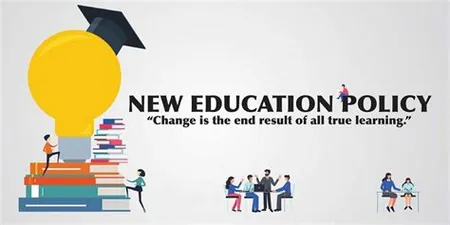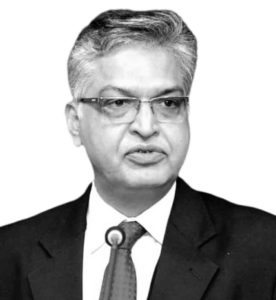


The third anniversary of the National Education Policy (NEP 2020) is about three months away. It may be expected that it will be celebrated with as much gusto as in the past two years. It inter-alia, promises that by 2040 the Indian higher education system shall be second to none in the world and that this lofty goal would be achieved by emulating the higher education heritage from the ancient pasts, which it believes to represent eternal Indian knowledge and thought. It claims that future higher education in the country would be built on the foundation of ancient India’s institutions like Takshashila, Nalanda, Vikramshila, Vallabhi and others. It proclaims that their rich “legacies would not only be nurtured and preserved for posterity but also researched, enhanced and put to new uses through our education system”.
University Education Commission of 1948, popularly referred to as the Radhakrishnan Commission had felt that the universities in modern India owed very little to the ancient centres of learning but the nation must remember that they existed from very early times. NEP 2020, nonetheless, nurtures the hope of using them as role model institutions of higher education to serve the nation in addressing the challenges of the 21st century.
The idea of learning from and emulating the past appeals to our emotions but may be far more difficult to accomplish. The ancient centres of learning had sprawling campuses, huge infrastructure, and a wealth of wisdom and knowledge in their libraries and learning resource centres of their time. Fully residential for their students and teachers, they offered teaching, training, learning and practice through shared living. They attracted a large number of gurus, monks and scholars and had a student-teacher ratio which may still be the envy of world-class universities.
Highly revered and enjoying exalted status, they had near absolute autonomy and freedom. They were, in fact, truly empowered communities of scholars, many of whom were institutions in themselves. These institutions may have been established, funded or supported by the kings and communities but they dreaded to interfere with their ways of teachings and dealings. They had no masters and no one told them what to teach and how. They desisted even the slightest hint of compliance or conformance. Many of them had lands and villages attached to them which provided them with independent funding in perpetuity.
The text and the context of the knowledge have undergone sea changes since then making the past content, curricula and pedagogy of limited relevance. The text-based pedagogy with utmost reverence to the teachers may also not be valid in today’s context. But how they attained excellence continues to remain relevant to date.
India, therefore, has a lot to learn from its own ancient past. To begin with, each one of our ancient centres of learning was of its own kind. None of them replicated the other. Learning from the past, we must desist from the temptation of uniformity, standardisation and formalisation. We could gain a lot by letting a thousand flowers with many hues, colours and fragrances bloom.
It also tells us that higher education institutions need to be assured of adequate, secure and guaranteed funding. They should be saved from the embarrassment and hassle of approaching for funds on yearly basis. They need to be helped and enabled to create an adequate corpus to provide for a perpetual source of revenue and be left free to manage their affairs within the resources thus available at their disposal.
Our ancient past indicates that higher education institutions must have a large number of highly qualified, committed and competent faculty and that merit must get precedence over all other considerations. It also informs that the higher education leadership must be entrusted to people renowned for their academic excellence, personal integrity, vision and passion for institution-building. Above all, it tells that the nation must create a conducive ecosystem enabling higher education institutions to work as empowered entities.
Will the nation be able to come up to such expectations? The present-day higher education institutions in the country leave a lot to be desired. They are starved of funds and have to depend upon the mercy of their masters. The combined expenditure on education by the Centre and States, as a percentage of GDP, has remained stagnant at 2.9% during 2019-20 to 2022-23 (BE). As a percentage of total government expenditure, it has declined from 10.7% in 2019-20 to 9.5% in 2022-23(BE), whereas the share of education in social services has come down from 42.5% to 35.5% during the corresponding period.
The student-teacher ratio in our higher educational institution is quite adverse. On average 30% of the faculty positions in centrally funded higher and technical education institutions, and 50% in state universities continue to remain vacant for a prolonged period of time. Quality and commitment of teachers have been seriously comprised due to appointments in ad-hoc, contractual, guest and visiting modes. Most world-class universities in the world have more than three thousand faculty members. Presently, less than 10 universities in the country have two thousand or more faculty members.teachers.
Autonomy and academic freedom have now become contentious. People who matter often cite China for giving little academic and administrative freedom to their universities and is still able to steer many of its institutions to enter into the league tables of world-class universities. Their argument may have some merit but India is not only a democracy presently but is being promoted as the mother of democracy and democratic dispensation demands for the highest degree of academic freedom as a precondition for excellence.
The Acts and Statutes of universities have undergone many changes over time but they still provide for the autonomous functioning and decision-making of higher educational institutions established under them. It is now time, to commit that these provisions are not usurped by agencies external to higher education institutions. Though completely autonomous on paper, contemporary universities in India have seldom rarely been free from political and bureaucratic interference. Their powers and functions are invariably circumscribed by advisories, memos, guidelines and regulations issued by multiple organisations and agencies. Over time, the tendency to direct universities and higher education institutions to do this and behave like that has only intensified.
Lately, even the semblance of autonomy is getting eroded rather rapidly. They are now under obligation to comply with directives and advisories issued to them at least once a week. Most require them to organise certain identified events and/or promote and propagate a particular kind of nationalism, social transformation and certain favourite ideas. They are not only expected to carry out the instructions in toto but must also upload documentary evidence of the same on the University Activities Monitoring Portal (UAMP).
Higher Education Institutions (HEIs) have conventionally been expected to perform three interrelated functions of teaching, research and extension or community connect. Occasionally, they have also been at the forefront of popularising, promoting and perpetuating certain ideas, ideologies, and values, but of their own volition. Faithfully acting on external dictates has never been a trait of universities anywhere in the world. And certainly not in the ancient Indian centres of learning. Are we really serious about making Indian higher education second to none in the world?

Furqan Qamar, former Adviser for Education in the Planning Commission, is a Professor of Management at Jamia Millia Islamia, New Delhi